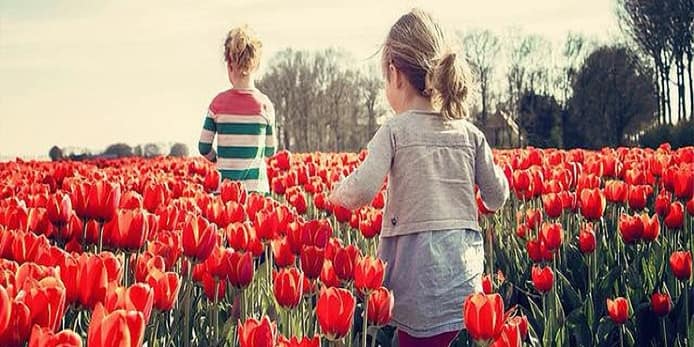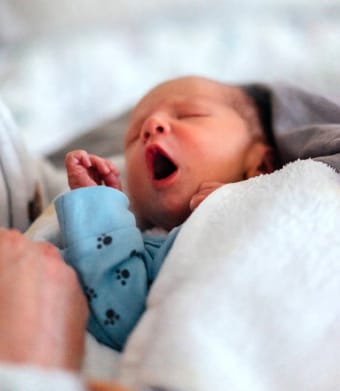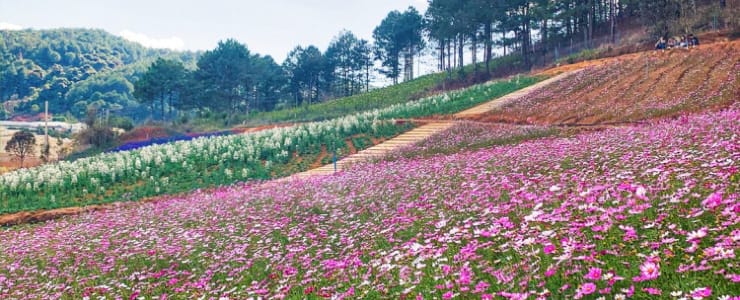What Are Pollinators?

Pollinators are the DADDIES of Nature!
They attract bees, butterflies, hummingbirds, and – even bats at night.
What Are Pollinators?

The job of all living things is to create offspring for the next generation – or we would not be here! I know you know that.
We are all pollinators.
Do you understand the magnitude of what you are doing when you help bees, hummingbirds, and butterflies pollinate?
You are helping to supply FOOD for the planet!
Well, the vicinity, anyway.
But if everyone would do it, and stop spraying insecticides, there would be enough food for the whole world!
And Then WE Were Born!
Nature is so beautiful and predictable!
I’ll tell you how… Stay with me…
There is an ulterior motive for the smell and colors of plants. They are made to attract BIRDS, BEES, AND BUTTERFLIES so that the next generation can be born.
I knew it … why am I not surprised?
Mother Nature Is Deliberate!

I often wondered about the scent of flowers and plants. I thought this was just a by-product and it was nice that we could enjoy the smell.
I thought we were just lucky!
The colors can be seen from far off, and the scent of the flowers fills the air so the flying critters will visit the blooms.
They eat from the flowers and plants and pollinate by getting pollen on their bodies and dropping it onto the next flower.
So simple: they spread the genes of the plants – making a blended family!
I am not making this up… This is the sex life of a plant … Revealed!
Bottom Line: Both the plant AND the birds, bees, and hummingbirds are Pollinators!
Each plays the role of one sex or the other and both pollinate the plant to–bring–LIFE.
Will The REAL Pollinators Please Stand Up?
Are Bees REALLY “BUSY”?

If we had to pollinate our plants, trees, and bushes, by ourselves – by hand – we would not be able to keep up with nature.
By the time we have finished pollinating, the season will be over. I suspect that at least half of our crops, or more, would never make it to fruition.
Did you know that bees supply 75% of our cross-pollination? That’s almost ALL.
Pollination is an essential part of plant reproduction, and 85% of plants need pollination!
Bees are a wonder of nature.
One in 3 (three) bites of what we eat or drink is pollinated by bees!
After gathering nectar, pollen, and resin, from your amazing flower garden, the worker bee goes back to the hive and does a dance, called the “waggle” … a man-made title for sure.
Oh, Shall We Dance…
This waggle tells the other members of the hive where the source of food is… Not so silly now. (Bees are so clever… take a peek inside)

She “waggles” vertically to indicate that the direction of the food source is toward the sun.
The length of the dance tells them how far the food source is from the hive.
No, don’t try this at home… It’s too intricate for people!
And, if you think that’s cool, wait until you hear this:
After the worker bee collects all the nectar she can, she goes back to the hive and passes the nectar, mouth-to-mouth, to the other worker bees.
By doing this the moisture content is reduced from 70% to 20%
– now it’s honey!
Can you just imagine how tiny their mouth is? … Really… it HAS to be small!
Can you imagine how long it would take to make a jar of honey?
The honeybee lives 2 to 3 months and produces just one teaspoon of honey, in-their-lifetime!
Remember this when you spread honey on your toast and call someone a Bee Brain.
Bees are superpowers, and aerodynamically, they are designed not to fly!
Now THAT makes me smile.
Just so you know, bees see no red in their spectrum, so they need diversity in flowers, such as white, yellow, blue, and orange. You can’t go wrong if you just plant them all.
It’s essential: keep those bees busy!
Does the Bumble Bee, Bumble?
The difference between the bumble bee and the honey bee is that Bubba has more hair, a thicker body, and dark wings.
Ok, he’s the big guy. But he’s less likely to sting you than a honeybee would.
In fact, he almost never stings in his lifetime!
That’s good news because I like his bzzzz!

Bubba Does the “Bzzzz” Shake!
Bumble Bees hold the anther of a flower and shake the pollen out of the flower! That’s when they shake and bzzzz!
Bumble bees can shake thousands of pollen grains from a flower in less than a second.
Then Bubba fills the sacs on his body with the pollen!
It doesn’t just go there automatically. This guy works hard
for a living.
It seems that everything in nature is magical… we could never do this!
Who Pollinates the Other 25%?
Maybe, The Butterfly?

Mexico!
Our Monarch butterflies in North America, fly all the way to Mexico for the winter and all the way back each spring, following the growth of the milkweed through the United States.
No single insect can fly that distance, but migration does take place for more than half the distance.
Like a relay race the next butterfly takes up the run – after all he has been resting up for a season. This is their itinerary.
From southern Ontario in Canada, it’s about 2,400 miles to Mexico.
These are butterflies we’re talking about here!.. They use their wings to undertake to fly 2400 miles… no help with airplanes.
They use their antennae to navigate by the sun… we use GPS! They know about the time and position of the sun; they factor in the time of year and fly south.
Well, that was easy!
Yes, we can make things to help us navigate, like GPS, but imagine if we could actually instinctively DO the same thing? Such power!
Imagine how many drivers would not get lost, because they won’t ask for directions.
The least we can do when the butterflies arrive is to help them enjoy a healthy meal…
Butterflies need the pollen, to exist, and so do we.
We need pollination to take place so plants can reproduce and we can eat.
Please! …Plant pollinator flowers.
And, Lest We Forget…
Allow the Hummingbirds To Humm!
Hummingbirds play a major role in pollination too. But there is something so magical when they buzz around and fly up to your face.
SIT STILL! … don’t move…

He’s a curious little guy and he’s trying to say hello! He likes humans!
And he is looking for flowers so don’t wear those silly daisy sunglasses anymore!
Watch him carefully – he is hovering
in your face!
He can fly forward, backward, and upside down! He flies at 30 mph in regular flight and 45 mph in courtship dives! (Ooooh!)
Do you hear that whoosh sound? That’s his wings beating 70 times per second right before your eyes!
All he wants is your pretty garden to fly into… he wants to gather nectar and pollen. And, just for that, he will eat beetles, insects, ants, aphids, gnats, mosquitos, wasps, and spiders.
He’ll keep your garden clean, at no charge. He will entertain you, just by being there.
He eats spiders!
He eats a LOT and stops to feed every 15 minutes. He gets plenty of exercise and has a very high metabolism.

He does like a feeder but please, use only sugar and water;
not honey. Honey can kill them.
They’re Smart, Too!
Call me a Hummingbird Brain!
Why do I want to be called a Hummingbird Brain? Because… Their brain is about 4.2% of their body weight… Ours is only 2%.
They can remember migration patterns and every flower they ever visited! They know how long it’s been between visits to flowers, so they leave time for the flower to generate more pollen and nectar.
The perfect husband. He can even recognize you!
Call him Roger, and put him in your next selfie!
WHAT Should I Plant?
You need a diversity of plants for pollination. A wildflower garden comes to mind.

This type of garden has a variety of species, high colors of blooms, and a wonderful aroma.
If you use native plants in your area, the insects won’t get confused. They will know those plants and blooms already because they have always been there… The most effective garden is a simple garden.
ASK questions! Garden centers do a wonderful job of encouraging pollinator gardening, and they give good advice.
Think about what you need in your garden to entice pollinators to visit. It’s a measure of success when you have bees and butterflies and hummingbirds
flitting around you.
Without pollinators, it would be up to you to pollinate that flower.
Who else would do it?… if not the bee, that would be you.
What Is In It For Us?
Get ready for this! … it just keeps getting better.
Besides the honey from the bees, the beautiful garden, and the aroma from the plants, nature always gives back far more than we can give nature.
The flower gives back to us by giving us essential oils for perfume and aroma therapy!
And the dried petals are used in potpourri!
Peony, lilac, rose, lavender, jasmine, wisteria… the list is endless.
And these smells can change our mood and boost our sense of well-being and happiness.

Essential Oils are used in aiding depression, improving fogginess, helping us sleep better, and they can improve focus.
You can buy your mood. Buy Lavender for sleep and relaxation.
Roses will perk you up!
Healthline praises the use of essential oils for optimum health: https://www.healthline.com/health/how-to-use-essential-oils
These oils are very concentrated and must be used with care.
Do some research before you handle essential oils.
If I sit beside a wildflower garden with lots of scents, and plenty of bees, hummingbirds, and butterflies around, I know that my mood will be good, happy, and relaxed.
And just for planting a wildflower garden, this is the beauty of what we get for helping pollinators to pollinate!
Mamma Didn’t Raise a Fool!
Do you really think Mother Nature can’t look after herself? Imagine how much nutrition there would be on the planet if there were no pesticides!
Without the interference of man, imagine the sea life the oceans would hold.
The land would have the vegetation and the animals and insects necessary for our survival!
Not a battery chicken in sight… simply put, we need to trust nature.
You never need to spray for aphids… Sprinkle the aphid-ridden plants with ladybugs.
They do a much better job of getting rid of aphids and they enjoy a healthy meal.
Enough to take home to the nest... There’s that regeneration thing again.
Pollinators And Flowers Have A Sex Life!
Don’t tell me you were skeptical!
Picture it: the flowers are vibrant, frilly, and beautiful!
Their colors and perfume attract hummingbirds, bees, and butterflies.
Nature designed this Fatal Attraction.
It’s their job and they do it in perfect balance, and everything happens for a season!
Here Is The Cycle:

The flowers give off an intoxicating perfume and wear pink and green and soft white... Kind of like a negligee.
It’s our job to provide the food that the pollinator birds and insects need… Or they will die!
Our pollinator bushes are feeding the pollinator insects and birds! We need to feed the pollinator bushes; no pesticides.
The hummingbirds are attracted to fluted petal flowers.
They use their long thin beak to suck out the nectar in the bloom!
The flowers attract birds, butterflies, and bees and entice pollination. They live their roles as nature intended.
Sounds sexy to me! And why not?
It’s how we came to beeee … For that, I am truly grateful.
I bet that you have stories about your gardens.
Do you have pollinators in your garden?
Do they attract bees and hummingbirds?
I would love to hear all about the joy that your garden gives you.
Drop a comment in the box below, and I will get back to you within 24 hours!
Regards, Corinne :-)))




This was a very informative and entertaining. I enjoyed how you enter twined education and humor. I also enjoyed all of the beautiful pictures you included. We live in the hocking hills area in Ohio and I wondered what kind of flowers would you recommend us planting around here to help the birds?
Hello Robert
Thank you for your comments. Intertwining humor and information is exactly what I was going for.
Please read What are the Bees Knees and see further information on bees and pollination.
Where your area is concerned I always say, ask at the garden centers.
Ask a local bird society about the birds in your area. They will be much better equipped with the information you want.
Believe me, it is very rewarding. You get the benefit of the garden and flowers, AND the bees, hummingbirds, and butterflies.
You will be proud of your garden!
Let me know how you make out.
Regards, Corinne
This is a very valuable post. Fewer people write posts like this now. The pollination you wrote about is a very important part of nature. Because without pollination, we might even lose the food we eat. I have heard that flowers are beautiful in one color to attract animals like this. Is that story true? Thank you so much for posting such valuable posts. Keep posting like this.
Pasindu, thank you for your comment!
Yes, the information I write is always researched so I am putting out facts as much as I possibly can.
I invite you to see my post about bees, as there is much more about pollination there too.
There is a link in the part where the bees do the “waggle” dance.
And yes, that is the correct name for this behavior!
The colors play a valuable part in attraction to insects and birds. But the real importance is that we help pollinate and feed the pollinators. There is a real danger and some countries do have to pollinate manually because they have no bees!
That’s terrible.
Pasindu, you touched on everything I wanted this post to say, and that is very encouraging.
Regards, Corinne